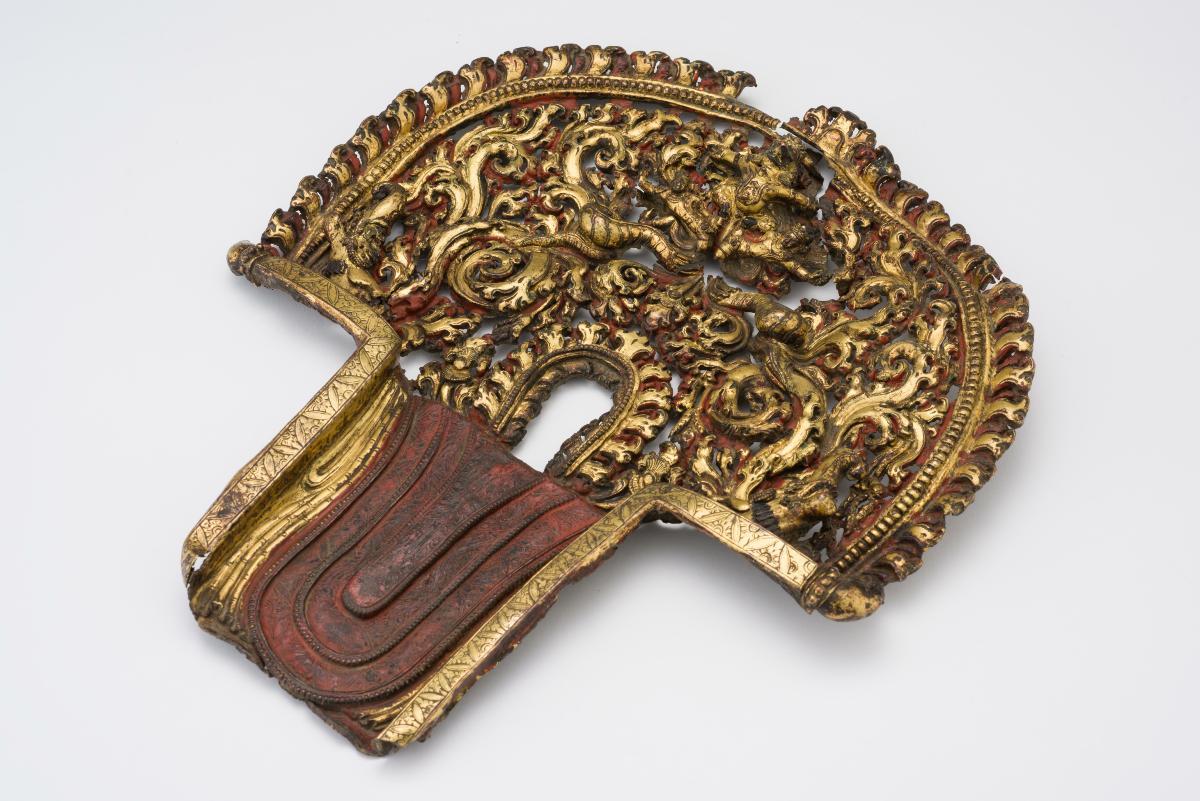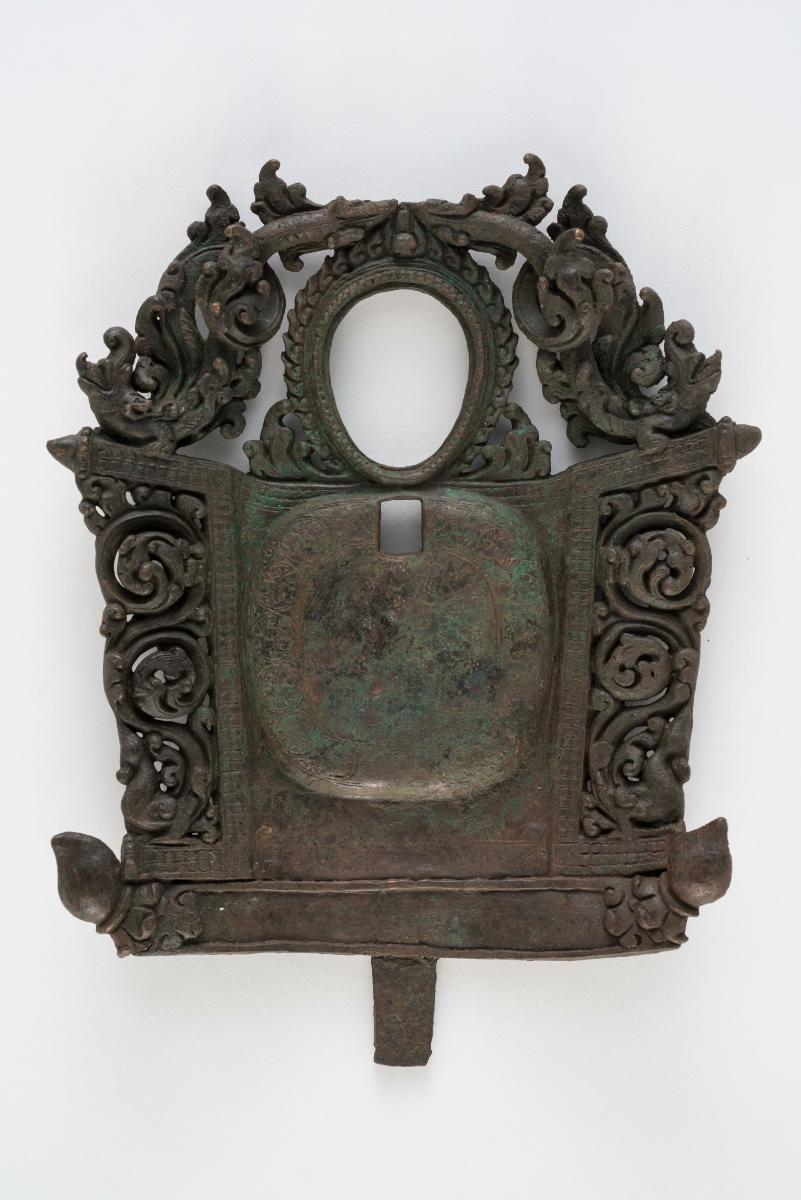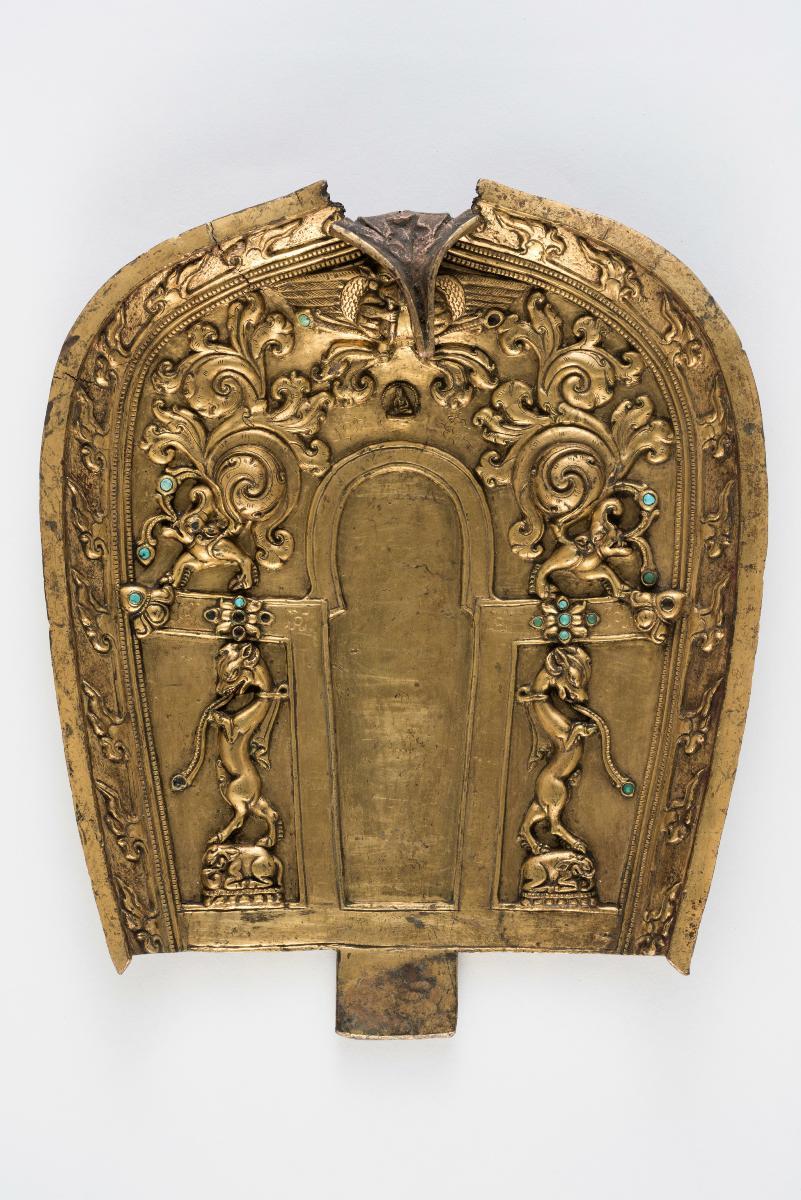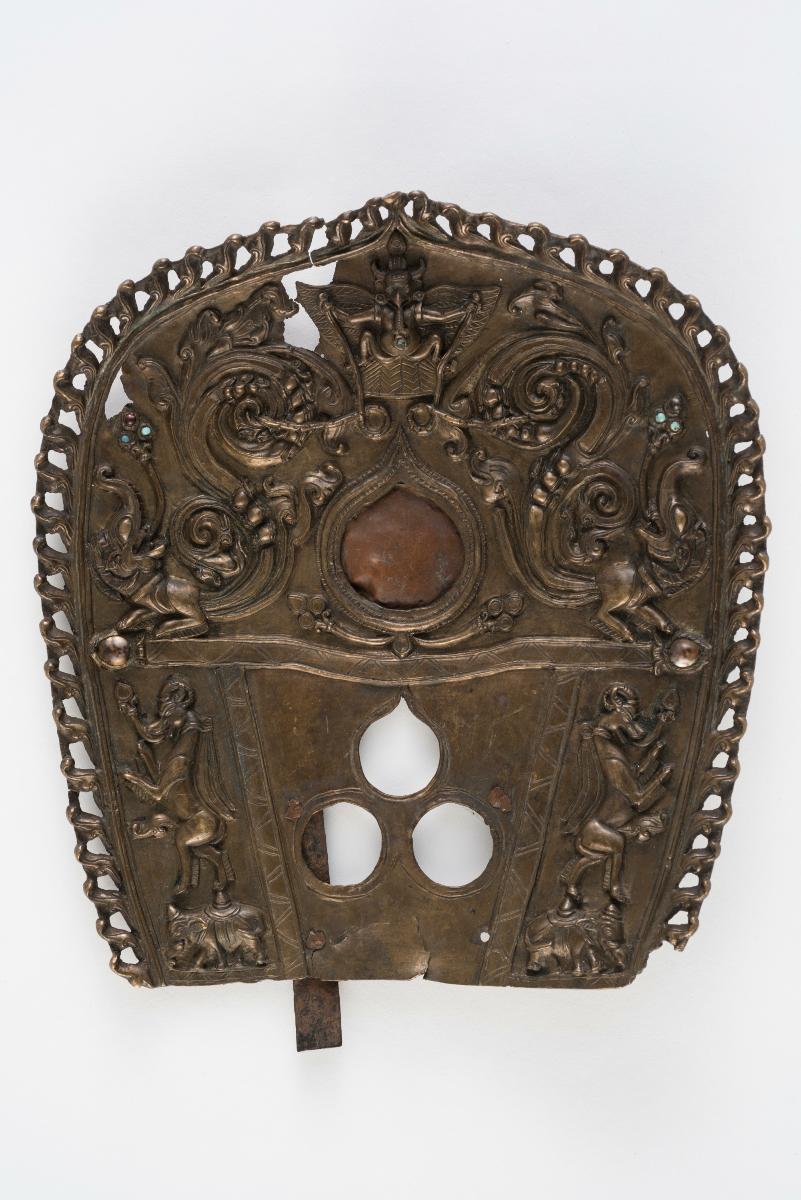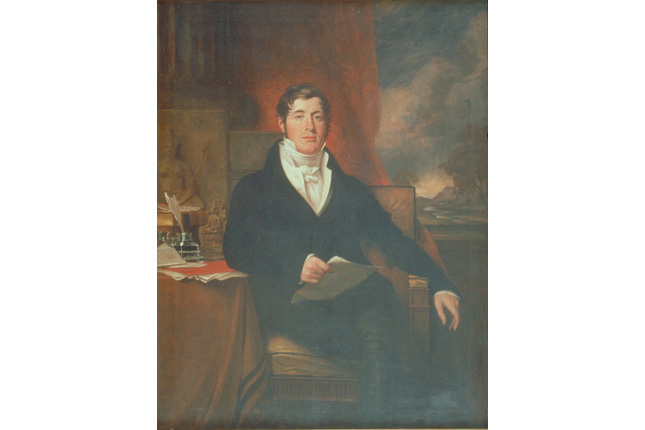This bronze 'mandorla' is known as 'parikara' or 'prabha' (aureole). Here the sheet-iron, gilt parikara rises above the square seat support. 'Makara' (sea monster) with upturned snouts and elaborate leafy tails rise up like musical notes which appear to weave 'in crescendo' at the centre with the flight of Garuda (a large mythical bird-like creature).Parikara refers to the large mandorla which covers the entire body of a divine figure. It is the effulgence or rays of light emitted from their being. This convention applies to all Hindu, Buddhist and Jaina figures. The parikara are cast separately and are usually detachable. Often, new ones are added to old metal statues, including the lotus bases.




